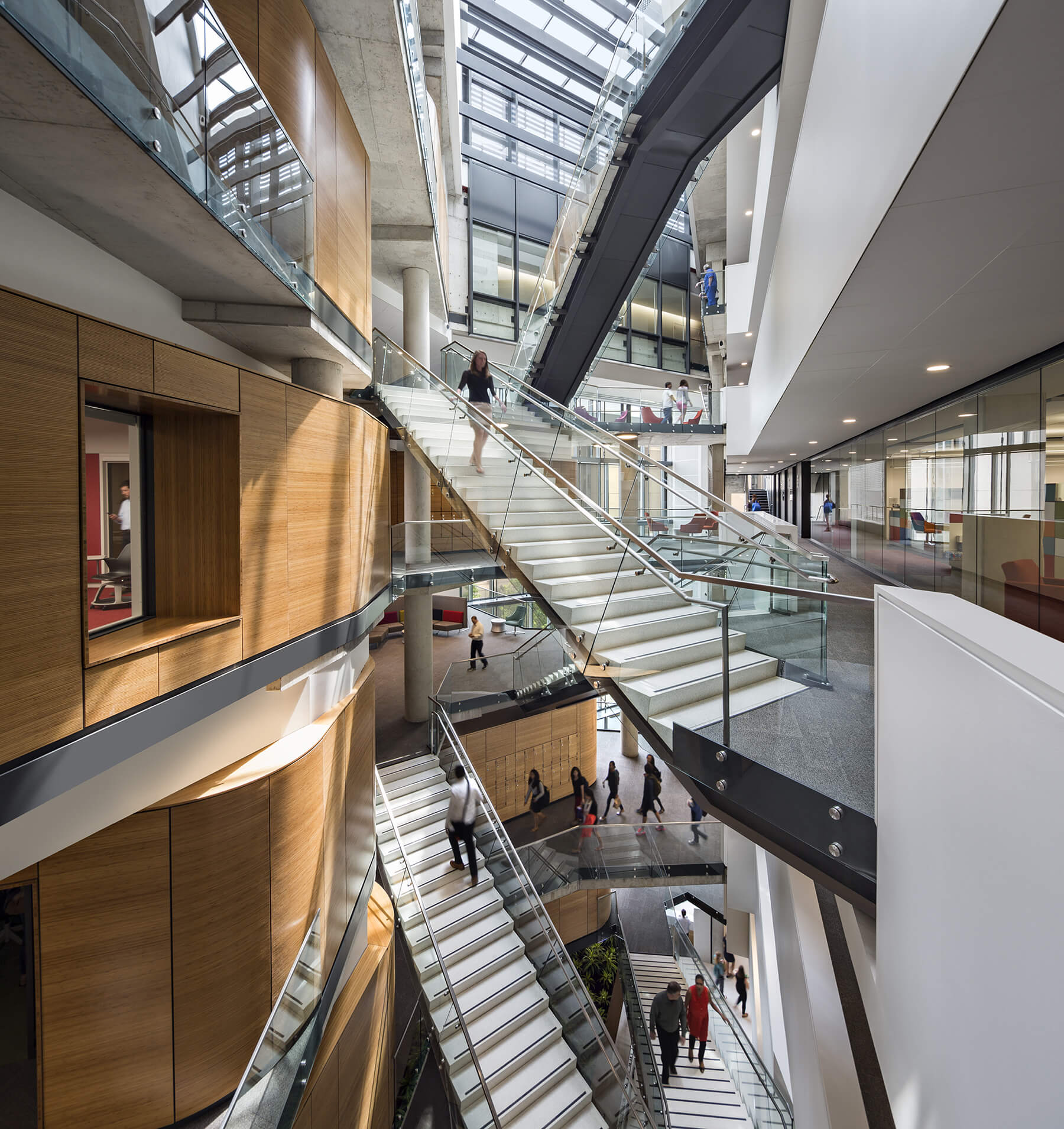The recent Metropolis article, Why Architects Should Embrace Post-Occupancy Evaluations, illustrates how POEs can reveal a wealth of information and how new technologies help architects track building performance. The POEs have proven benefits. Research by the U.S. Army’s Construction Engineering Research Laboratory estimates a nearly 80-fold return on investment: Every dollar spent can save as much as $77 in operating, maintenance, and renovation costs.

PAYETTE Principal and Director of Building Science Andrea Love shared our recent Post-Occupancy Evaluation findings of our 2017 AIA COTE Top Ten Award recipient Milken Institute School of Public Health at the George Washington University. When we reviewed at the actual energy performance for the building, the meters showed that consumption was 10 to 15 percent higher than predicted.
People loved the project so much, they were there more often. When we adjusted the model for higher occupancy, it fit perfectly.
Andrea Love, AIA, LEED Fellow
Occupant surveys revealed that 87 percent of respondents feel the building supports their health more than other campus buildings, citing stairs and natural light as the primary reasons.
As explained in the article, POEs vary widely in scope, but generally they focus on two basic questions: Is the building behaving as intended? And are occupants happy with the results? Studies consistently show correlations between the two; a report last year indicated that 88 percent of building-performance attributes directly affect user satisfaction.
Read the article.


